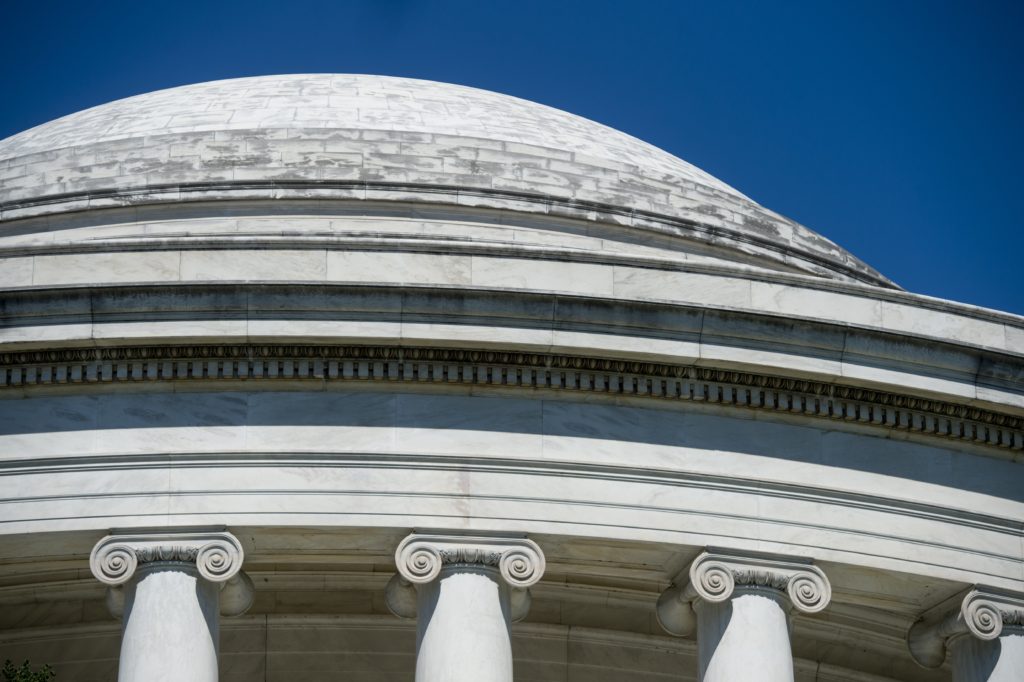Art World
Investigation Launched for Mysterious Black Slime Affecting Monuments Around the World
No, this isn't the X-Files...

No, this isn't the X-Files...

Naomi Rea

While it might sound like an episode of Stranger Things, the American National Parks Service (NPS) has launched an investigation into a peculiar black slime that has been creeping up on some of the world’s most iconic landmarks.
Monuments across the globe are being visibly darkened by the slime, which NPS explains is actually a stubborn colony of microscopic organisms called biofilm that coat stone surfaces in black.
Since 2014, a team of conservators, architects, and molecular biologists have been preparing to test potential treatment options, as a method of permanent removal of the blight has not yet been established.
The growth is particularly prominent on the dome of the Jefferson Memorial in Washington D.C. In a statement to the press, the superintendent of the National Mall and Memorial Parks, Gay Vietzke, responded to the noticeable darkening of the iconic rotunda in recent years, saying, “The increased presence of biofilm presents a new challenge in the care of memorials throughout the National Mall, particularly at the Thomas Jefferson Memorial.”
The marble of the Jefferson Memorial was already under siege from natural weather conditions, and the pitted texture of the eroded parts of the monument’s stone made it an ideal breeding ground for the mysterious microorganisms.
The superintendent went on, “We are continuing to study biofilm and research treatment methods, and look forward to restoring the dome to its original luster while ensuring its long-term preservation.”

Angkor Wat, viewed from the rear. Photo James Mason-Hudson, courtesy Wikimedia Commons
The scourge is also affecting historic sites further afield, such as Hadrian’s Villa in Italy, historical sites in Egypt, and even encroaching on Cambodia’s magnificent Angkor Wat, the Daily Mail reports.
Although biofilm was successfully treated at the D.C. War Memorial in 2011, the chief of resource management for NPS, Catherine Dewey, emphasizes that the preservation of the monuments is top priority, and that care is being taken to ensure treatment options do no further harm to the landmarks.
“Treatment of biofilm is difficult, as there is no known permanent method for removing it, and we have to ensure that any treatment must not do further damage to the soft marble of the memorial nor encourage further growth,” she said. “We are testing a variety of treatment techniques to find the option that is least damaging to the stone, safe for the environment and visitors, and cost effective.”
NPS officials are testing ten different biocides on patches at the base of the Jefferson Memorial in order to monitor their effectiveness against biofilm. They will also investigate the efficacy of experimental treatment options involving ozonated water and irradiation with lasers.
There is currently no timeline for the treatment but the cost of the most effective option will determine how quickly restorations can be undertaken on the dome.